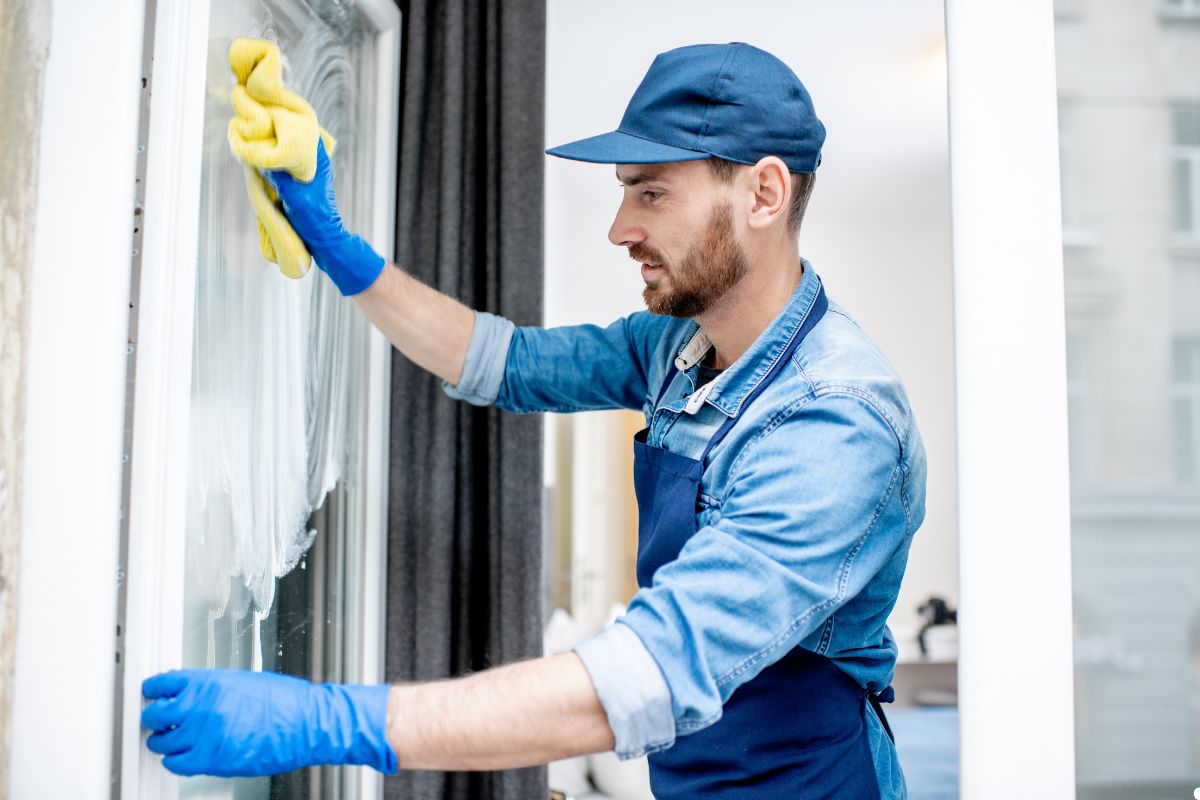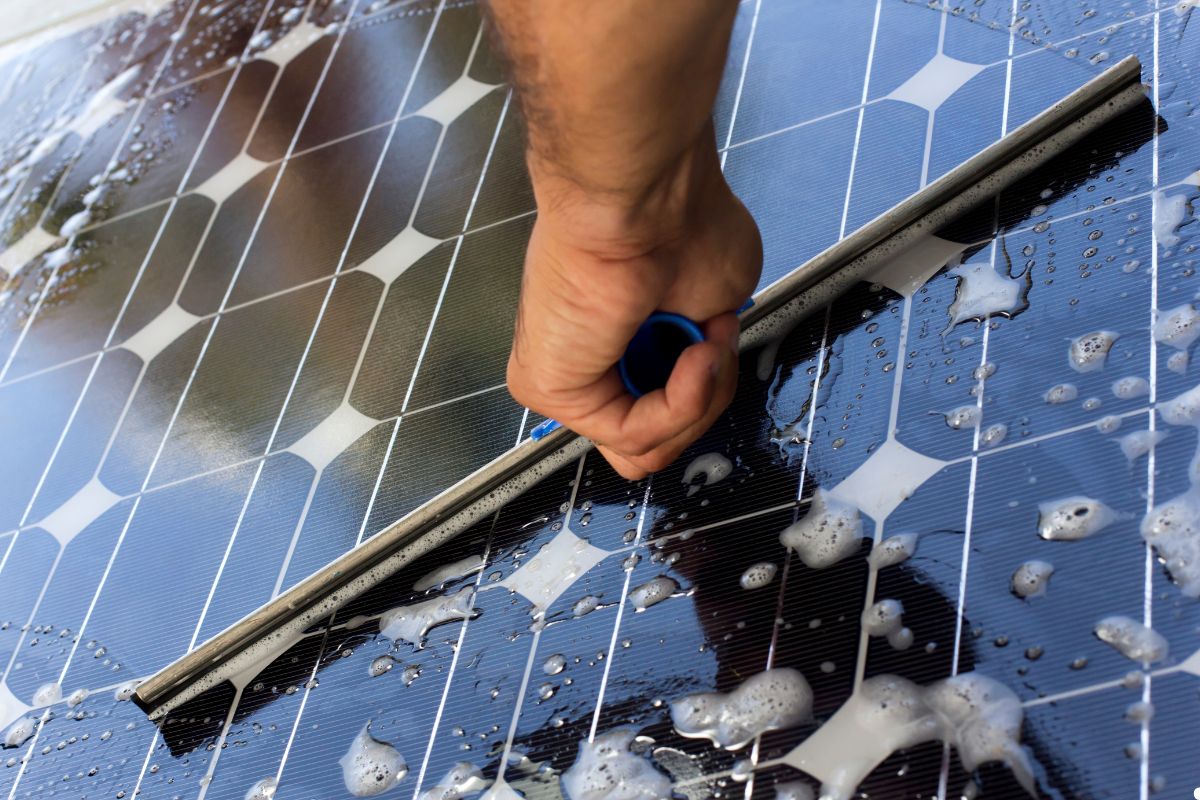
Achieving perfectly clean, streak-free windows doesn’t require expensive, chemical-laden store-bought cleaners. The best homemade window cleaning solutions often rely on simple, inexpensive ingredients you likely already have, primarily distilled white vinegar and water or a mild dish soap and water mixture. These DIY options are effective at cutting through grime and leaving a sparkling finish without harsh fumes or residues. Read on to discover how easily you can mix up your own powerful window cleaners and master the technique for flawless results. Need help with a professional touch? Call us today for expert window cleaning services!
Why Choose Homemade Window Cleaners?
Opting for homemade window cleaners offers several compelling advantages over commercial products. Firstly, it’s incredibly cost-effective; ingredients like vinegar and dish soap are far cheaper than specialized cleaners. Secondly, you control the ingredients, making it easy to create eco-friendly and non-toxic options, which is better for your home environment, family, and pets. Many commercial cleaners contain ammonia or strong chemicals with harsh fumes, which you can easily avoid with DIY solutions. Plus, you’re using readily available ingredients often already sitting in your pantry! DIY solutions are perfect for regular cleaning, but if you’re dealing with mineral buildup, consider hiring a hard water removal service for deeper results.

Gather Your Window Cleaning Arsenal
Before mixing your solution, ensure you have the right tools for the job. Effective window cleaning relies as much on technique and tools as it does on the cleaner itself. Here’s what you’ll typically need:
- Spray Bottle: For applying your homemade solution. Choose a sturdy, reusable one.
- Squeegee: A high-quality squeegee with a sharp, pliable rubber blade is crucial for streak-free results.
- Microfiber Cloths: Essential for wiping the squeegee blade and detailing edges. Use lint-free cloths for the best finish.
- Bucket: Useful for rinsing cloths or holding a larger batch of cleaning solution if tackling many windows.
- Scrubber or Sponge: For initially washing away heavy dirt and grime before using the squeegee. Choose a non-abrasive option.
- (Optional) Ladder or Extension Pole: For safely reaching high windows.
The Classic Vinegar & Water Solution
This is arguably the most popular and effective homemade window cleaner. Distilled white vinegar’s acidity is excellent at breaking down grime, soap scum, and mineral deposits (often left by hard water).
Recipe: Mix equal parts distilled white vinegar and distilled water in your spray bottle.
Why Distilled Water? Using distilled water helps prevent mineral streaks that tap water can sometimes leave behind, especially in areas with hard water.
How it Works: Spray the solution generously onto the window, let it sit for a moment to dissolve dirt, then scrub gently if needed before squeegeeing off. The vinegar smell dissipates quickly as it dries.
Dish Soap Power for Greasy Windows
If your windows (especially kitchen windows) have greasy film or fingerprints, a simple dish soap solution works wonders. Dish soap is designed to cut through grease.
Recipe: Add just a couple of drops of liquid dish soap (like Dawn or similar) to a spray bottle filled with water.
Important: Don’t use too much soap! Excess soap is the primary cause of streaks when using this method. You want just enough to create slight suds, not a bubble bath. Swirl gently to mix, don’t shake vigorously. This cleaning solution is excellent for the initial wash-down before a final rinse or vinegar-solution pass if needed.
Rubbing Alcohol for Quick Drying & Extra Shine
Adding rubbing (isopropyl) alcohol to your cleaning mix can boost its effectiveness, especially in cooler weather or humid conditions, as it helps the solution evaporate faster, reducing the chance of streaks.
Recipe: Combine 1 cup water, 1 cup isopropyl alcohol (70%), and 1 tablespoon white vinegar in a spray bottle.
Benefits: The alcohol acts as a solvent, helps with quick drying, and provides some disinfecting properties. This is a great option if you find the basic vinegar solution isn’t quite cutting it or if you’re cleaning on a cool day.
Mastering the Streak-Free Window Cleaning Technique
Even the best homemade solution won’t work well without proper technique. Follow these steps for sparkling, streak-free results:
- Preparation: If windows are very dirty, quickly rinse or wipe them down first to remove loose dirt and debris. Lay an old towel along the windowsill inside to catch drips.
- Application: Spray your chosen homemade solution generously onto the window glass, ensuring good coverage.
- Scrub (If Needed): Use a non-abrasive sponge or window scrubber to gently loosen stubborn spots or heavy grime.
- Squeegee Method:
- Start at the top corner. Angle your squeegee method at about 30 degrees to the glass.
- Pull the squeegee down smoothly and steadily in one continuous stroke.
- Wipe the squeegee blade clean with a microfiber cloth after every stroke.
- Overlap each stroke by about an inch to avoid leaving lines.
- Work from top to bottom, or side to side consistently.
- Detailing: Use a clean, dry microfiber cloth to wipe away any remaining moisture along the edges of the pane and the windowsill.
- Avoid Direct Sun: Try to clean windows when they are not in direct, hot sunlight. The heat can cause the cleaning solution to dry too quickly, leading to streaks before you can squeegee it off.
Tackling Tough Spots and Common Problems
Sometimes, regular cleaning isn’t enough. Here’s how to handle common issues:
- Hard Water Stains: These chalky white spots can be tough. Try spraying pure white vinegar directly onto the spots, letting it sit for several minutes to dissolve the minerals, then scrub gently and clean as usual. Repeat if necessary.
- Stuck-on Grime (Paint, Bug Splatter): Gently use a new razor blade scraper held at a low angle on wet glass to carefully lift stubborn debris. Be extremely cautious not to scratch the glass. Avoid using on tinted or coated glass.
- Persistent Streaks: Streaks are usually caused by a dirty squeegee blade, using too much soap, cleaning in direct sun, or using hard tap water. Ensure your blade is clean and sharp, use minimal soap, work in the shade, and try distilled water.
Safety Precautions for DIY Window Cleaning
Even with simple homemade solutions, safety is important:
- Label Bottles: Clearly label your spray bottles to avoid mix-ups with other substances.
- Keep Out of Reach: Store cleaning solutions, even natural ones, away from children and pets.
- Ladder Safety: If using a ladder safety for high windows, ensure it’s stable, on level ground, and follow all recommended safety guidelines. Have someone spot you if possible. Consider professional help for hard-to-reach windows.
- Use Gloves: While generally mild, vinegar can irritate sensitive skin. Consider wearing gloves, especially for prolonged cleaning sessions. To protect sensitive skin from irritation, especially during prolonged cleaning, our services ensure the use of skin-safe, eco-friendly products.

Your Homemade Window Cleaning Questions Answered
Here are answers to some frequently asked questions about DIY window cleaners:
Can I use tap water instead of distilled water?
You can, but distilled water is highly recommended, especially if you live in an area with hard water. Tap water contains minerals that can leave spots or streaks on the glass as it dries. If your tap water is naturally soft, you might get away with it, but distilled water guarantees a spot-free base. Want crystal-clear results every time? Contact us to learn how distilled water makes all the difference!
How often should I clean my windows?
Most homeowners find cleaning windows inside and out twice a year (spring and fall) is sufficient. However, factors like living near a busy road, high pollen counts, frequent rain, or having pets and children might mean you need to clean them more often to keep them looking their best.
Is homemade window cleaner safe for tinted windows?
Be cautious. Most professionally installed window tints are applied to the inside surface. Never use ammonia-based cleaners on tinted windows, as ammonia can damage the film. Vinegar and water solutions are generally considered safer as they are ammonia-free, but always check the tint manufacturer’s specific cleaning recommendations first. When in doubt, use only plain water and a microfiber cloth or consult a professional window cleaner experienced with tinted glass.
What’s the best cloth to use for drying windows?
Lint-free microfiber cloths are the gold standard for drying window edges and buffing out any minor streaks. They are highly absorbent and don’t leave fuzz behind. Avoid using paper towels (can leave lint) or old cotton rags (can smear). Some professionals also use surgical towels or scrim.
Enjoy Your Sparkling Clean Windows!
With these simple recipes and techniques, you can easily achieve professional-looking, streak-free windows using safe and affordable homemade solutions. Mixing up a batch takes only minutes, and the results – clear views and a brighter home – are well worth the little effort involved. Enjoy the satisfaction of sparkling clean windows accomplished the DIY way! Need a hand or have questions? Call us – we’re happy to help!
